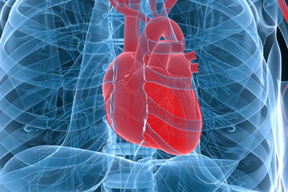 WASHINGTON: In a discovery that may pave the way for regeneration of damaged heart tissue, scientists have successfully stimulated the mouse heart to grow new cells.
WASHINGTON: In a discovery that may pave the way for regeneration of damaged heart tissue, scientists have successfully stimulated the mouse heart to grow new cells.
Researchers have shown that a subset of RNA molecules, called microRNAs, is important for cardiomyocyte cell proliferation during development and is sufficient to induce proliferation in cardiomyocytes in the adult heart.
The team found that the loss of the microRNA cluster miR302-367 in mice led to decreased cardiomyocyte cell proliferation during development.
In contrast, increased expression of the microRNA cluster in adult hearts led to a reactivation of proliferation in the normally non-reproducing adult cardiomyocytes.
This reactivation occurred, in part, through repression of a pathway called Hippo that governs cell proliferation and organ size.
“The Hippo pathway normally represses cell proliferation when it is turned on,” said Ed Morrisey, from the University of Pennsylvania.
“The cluster miR302-367 targets three of the major kinase components in the Hippo pathway, reducing pathway activity, which allows cardiomyocytes to re-enter the cell cycle and begin to regrow heart muscle. This is a case of repressing a repressor,” said Morrisey.
In adult mice, re-expression of the microRNA cluster reactivated the cell cycle in cardiomyocytes, resulting in reduced scar formation after an experimental myocardial infarction injury was induced in the mice.
There was also an increase in the number of heart muscle cells in these same mice.
However, long-term expression of more than several months of the microRNA cluster caused heart muscle cells to de-differentiation and become less functional.
“This suggested to us that persistent reactivation of the cell cycle in adult cardiomyocytes could be harmful and causes the heart to fail,” said Morrisey.
The investigators surmised that cardiomyocytes likely need to de-differentiate to divide, but they may lose their ability to contract over time.
“We overcame this limitation by injecting synthetic microRNAs with a short half-life called mimics into the mice,” says Morrisey. -PTI






